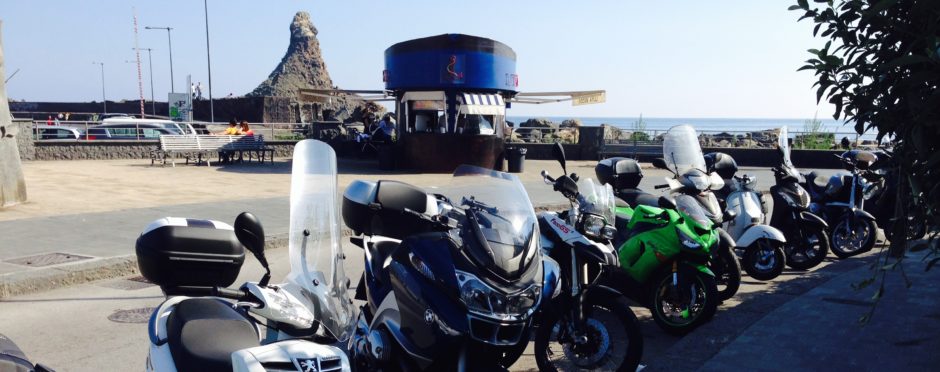Impact
A component of navigation that will result in a collision if a change in course isn’t made immediately is known as Constant Bearing, Decreasing Range. Constant bearing means there is no relative lateral motion of an object. The object appears to be fixed in position. As the range decreases, unless a change is made, there will be a collision.

Failing to see Constant Bearing and Decreasing Range
This is a dangerous place to be as a pilot of an airplane or captain of a ship. People often wonder how two huge ships can collide at sea, or airplanes can hit each other in the huge sky. Ultimately a collision boils down to visual cues that go missed and the mechanics of our eye function. Any time you’re operating a vehicle, ship, plane, car or bike, the same concept can be applied. Avoid a situation that sets up constant bearing and decreasing range.
Physiology
Our eyes detect movement by observing contrasting objects in our field of view that have differential movement. We rely on our peripheral vision to detect movement, then use our central vision to lock in on the distraction, identify it, judge its closure rate and take action, or not…
Central vision is unreliable in detecting motion because its function is to have clear views in straight lines. Peripheral vision is designed to monitor angular motion.
Real World
Out in traffic, we get lulled into enjoying the unchanging “picture” in front of us. Car drivers suffer from this too. We generally react only to what we see, and sometimes hear. Motion draws our attention and causes us to make an assessment of what we see. Normally, we try to identify the object and determine if its movement is going to become a problem. In other words, will we suffer from an impact? This assessment happens in less than a second. The trick is making the judgment quickly and performing the right maneuver to result in a decrease of the threat.
Essentially, quick and correct judgment is key. With the benefit of time, we have the luxury of delaying our reaction. The only way to increase your time to make a decision is to identify the threat as early as possible. We need to see and track the movement long enough to make a decision.
Be Seen
So, as a motorcycle operators in traffic, we need to find ways to increase the chances a car driver will see us and have enough time to make the correct decision not to take us out. To make detection easier for the car driver, you need to create some sort of differential motion. Angular motion is the easiest to detect. Linear motion is the most difficult. Think of linear motion as closing or opening on a target in a straight line. Ever wonder why people wait until the last minute to put on the brakes, or pull out in front of you from a side street? It’s because of poor judgement of closure rate.
My philosophy is to maintain some “vector” in traffic. That’s an aviation term and what I mean by vector is to have some differential speed relative to the traffic around you. You can choose to be slower, leading to errors in judgement rate by fellow motorists forced to go around you. Or, you can be a bit faster, causing you to make more lane changes navigating through traffic creating angular motion.
Remember, angular motion is much easier to detect than linear motion. Think about that for a second. Passing a motorist creates angular motion as your approach and pass. As an example, the driver in the lane next to you wants to change lanes and looks in their rear-view mirror and maybe their side mirrors. If they don’t perceive any motion, they will change lanes into you (assuming you’re right next to them). By having some vector, you will create angular motion and maybe the driver will make the right call and wait for you to pass. Along those lines, don’t stay in a driver’s blind spot. Bad things can happen!
Can you have too much?
If you have too much positive vector, or higher speed relative to traffic, you may not be seen because the car driver’s expectations have been exceeded. People aren’t used to driving when other vehicles have high relative motion. Our brains work by processing what we expect to see, and don’t always deal with reality very well. So be careful using large amounts of positive vector. Besides, the cops won’t tolerate it!
